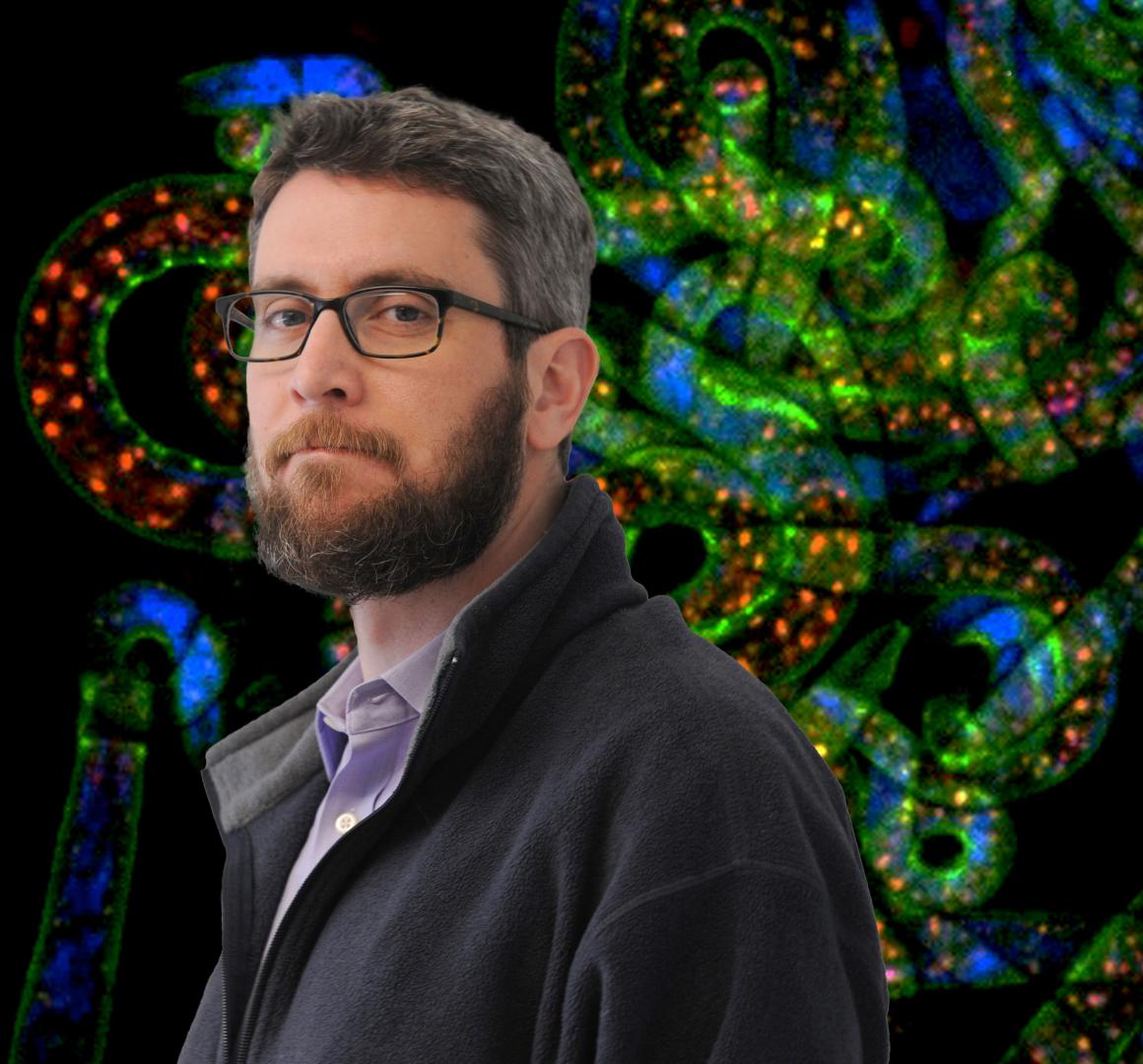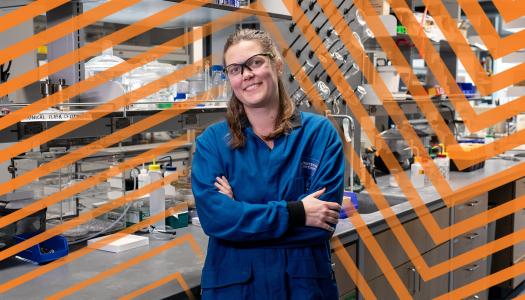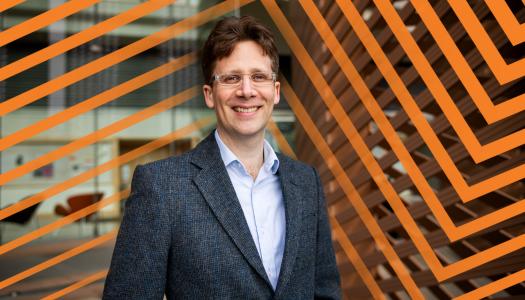Cliff Brangwynne seeks the symphony in the science of cells

Ask Cliff Brangwynne how his research will change the world, and you’ll get a good-natured shrug. It’s not that he doesn’t have a few ideas about how his groundbreaking studies of the structure and behavior of living cells might be put to practical use; it’s just that everything he knows about science has taught him not to think in such terms.
“I always tell students and post-docs who join the lab that it is our sincerest hope that what we find is way more interesting than what we could have conceived beforehand,” says Brangwynne, an associate professor of chemical and biological engineering. “Because if I can already think about it and explain it, then it’s not real discovery, right?”
Brangwynne’s career of discovery includes his 2008 post-doctoral work at the Max Planck Institute in Germany, where he challenged the established science on cellular structure when he observed that cells exhibited condensed liquid traits — rather than elastic solid characteristics. In the past decade, his research has provided a foundation for an entire new field of study and uncovered promising clues for potential treatments for cancer and neurodegenerative diseases like Amyotrophic Lateral Sclerosis (ALS), Alzheimer’s disease, and Huntington’s disease. In May 2018, the Howard Hughes Medical Institute named Brangwynne one of 19 new HHMI Investigators, one of the most notable honors in biomedical research.
Just as our bodies are made of organs like the heart, liver, and brain, living cells are made up of parts called organelles — little machines that also carry out specific functions. “We try to figure out the underlying physics of how these structures assemble inside cells,” says Brangwynne, who leads the Soft Living Matter Group, an interdisciplinary team of Princeton engineers, biologists, and physicists. His team has conducted studies demonstrating that these liquid subcompartments of the cell don’t gel together but instead interact like gobs of oil in water. “It turns out that if you can start to pick apart those rules and understand how these structures in our cells are built naturally, then you can also understand something about when the process goes wrong.”
The parts that I like about science, it really is a lot like art. Scientists, we’re not in it for money or fame. It’s just this beauty and the joy of the thing for itself — this idea of knowledge.
Some diseases, like ALS, seem to be associated with an improper transition from the liquid state. Under certain adverse conditions, the structures in cells solidify, causing a freeze-like effect on processes in the neurons that debilitates their function. “The phase transition concept is itself just the tip of the iceberg, because the cell is turning these knobs dynamically in ways that we really don’t understand at all yet,” Brangwynne says. “As an engineer, I’m interested in practical things, fixing problems. If you want to control some system, you first have to understand how it works.”
A Massachusetts native, Brangwynne majored in materials science and engineering at Carnegie Mellon and received his Ph.D. in applied physics from Harvard. He arrived at Princeton in 2011, and credits the University’s emphasis on interdisciplinary collaboration for creating a fertile environment for discovery. “I don’t think I would be happy if I was just confined to one department within some traditional disciplinary infrastructure where you’re not supposed to move between boundaries,” Brangwynne says. “Here, I can talk to my colleagues in chemical and biological engineering, who are experts in statistical mechanics and phase transitions of polymeric systems; I can talk to my colleagues in molecular biology and think about the kinds of biological processes that are at play; and I can interact with the folks in genomics that is itself a kind of hub for people from computer science and chemistry.
“Nobody at Princeton really cares too much about what department you’re in,” Brangwynne adds. “It’s more just like, ‘Hey, we’re at Princeton and we’re trying to ask and answer interesting questions about how nature works.’ This is the place where that can best happen.”
Photo Illustration: Portrait of Cliff Brangwynne by Laura Pedrick for Howard Hughes Medical Institute; background art, "Medusa," by Jamie Barr and Cliff Brangwynne
For information about supporting data science and interdisciplinary discovery at Princeton, contact Tom Roddenbery, associate director, fundraising initiatives, at thomasr@princeton.edu or 609.258.6122.


